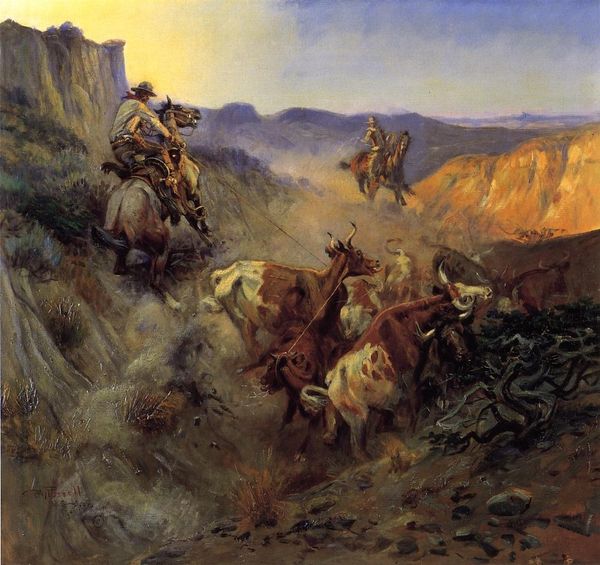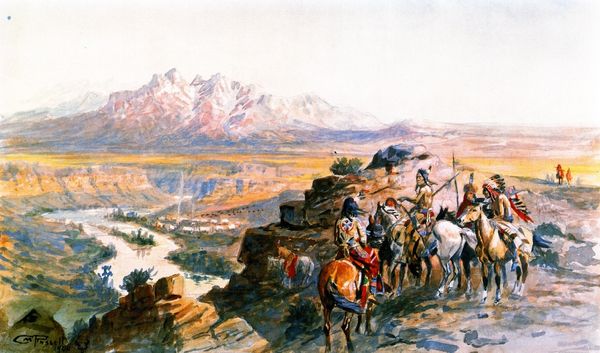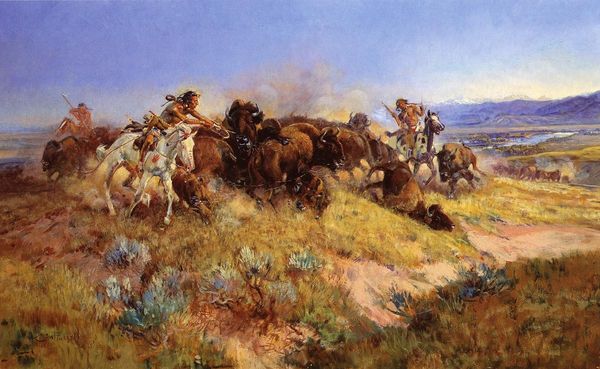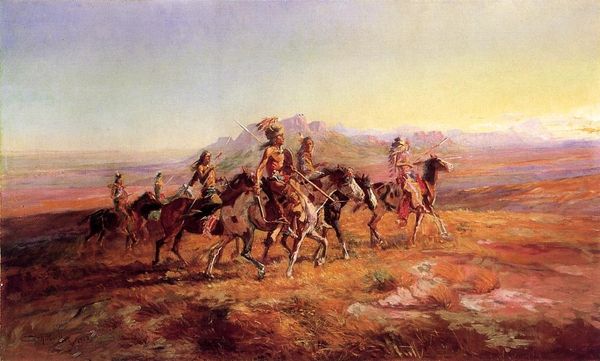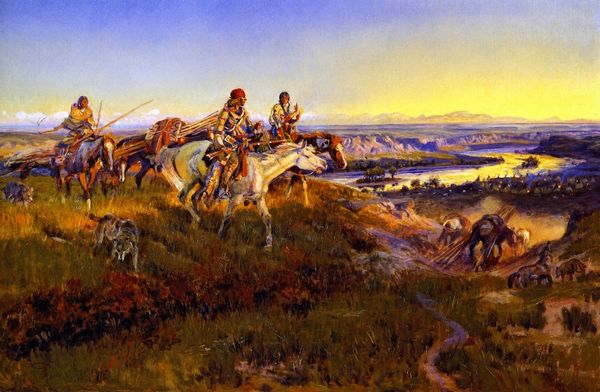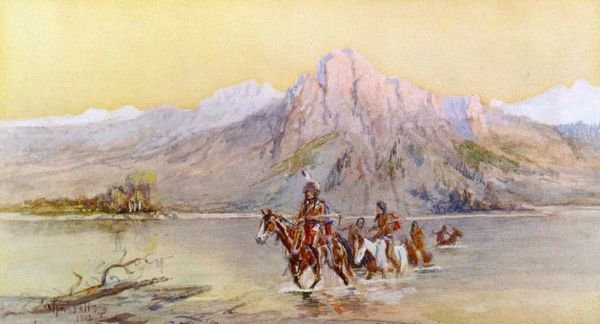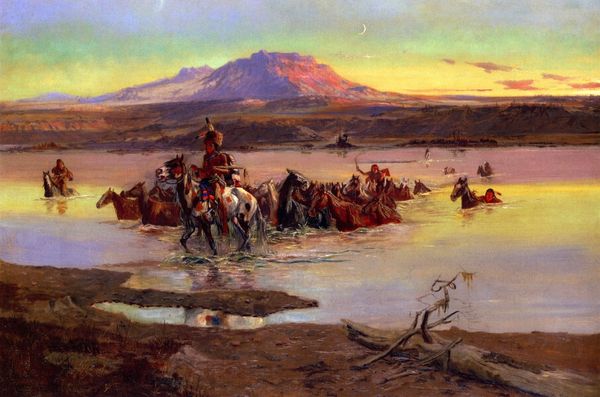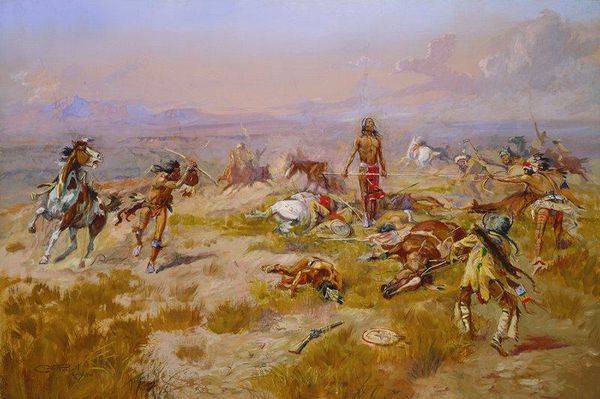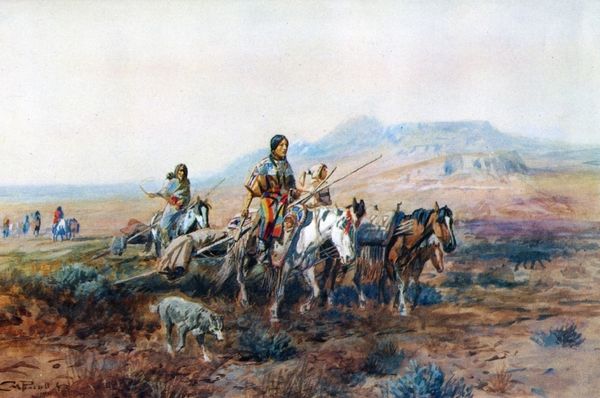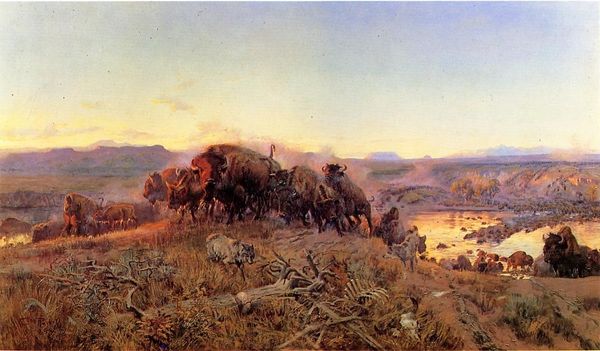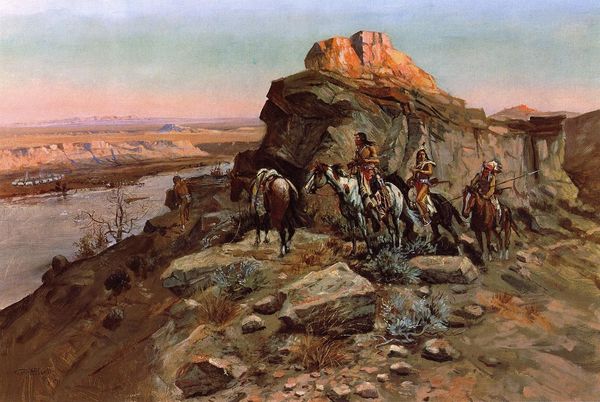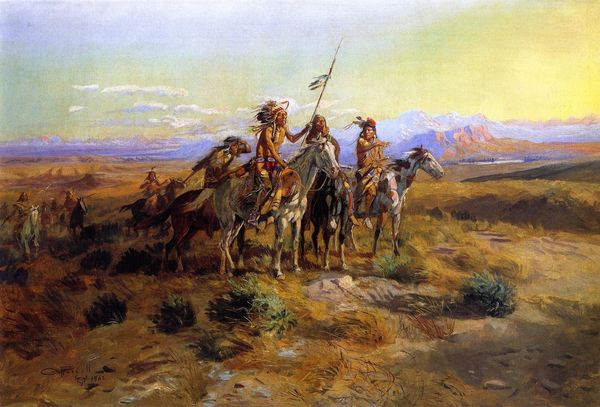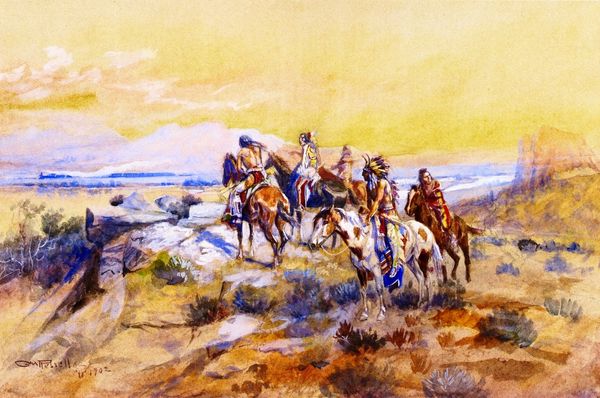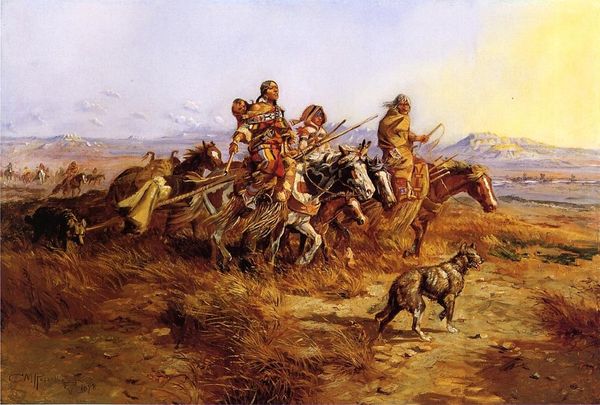
Copyright: Public domain
Editor: So, this is Charles M. Russell's "Planning the Attack" from 1900, an oil painting depicting a group of Native Americans surveying a landscape. It strikes me as a really romanticized vision of the American West. What do you see in this piece? Curator: Beyond the romantic aesthetic, consider the inherent power dynamic woven into the imagery. The vantage point—the high ground—speaks volumes about knowledge, perspective, and perhaps even dominance. The act of "planning" suggests deliberation and strategy but can also evoke a feeling of threat or imminent change. It's interesting how Russell uses symbols of indigenous peoples to construct ideas around conflict and expansion. What memories or feelings does this image evoke in you? Editor: I suppose it brings to mind a sense of the ‘Wild West’ narratives I grew up with. But now, looking at it, I wonder about the power that those images hold. The native figures, are they symbols of resistance or of something else entirely? Curator: Exactly! Ask yourself what visual cues contribute to those feelings. Consider their placement, the colours, the overall tone. What cultural narratives do they echo, reinforce, or challenge? Perhaps they reflect a turning point, a last stand against the encroachment of Western settlement? And the vast, untamed landscape...is it a symbol of freedom, or vulnerability? The power of icons often lies in their duality. Editor: That’s a powerful point. It's less about a simple depiction and more about layering meanings, reflecting on collective historical experiences. Curator: Precisely. It reveals how the artist utilizes figures and landscape elements to project cultural assumptions and anxieties regarding a changing America. Editor: It definitely offers a deeper layer than I initially perceived, thinking about how cultural narratives get embedded in art like this. Curator: Indeed. By recognizing these symbols, we become more critical viewers and understand how art shapes, and is shaped by, our collective memory.
Comments
No comments
Be the first to comment and join the conversation on the ultimate creative platform.
